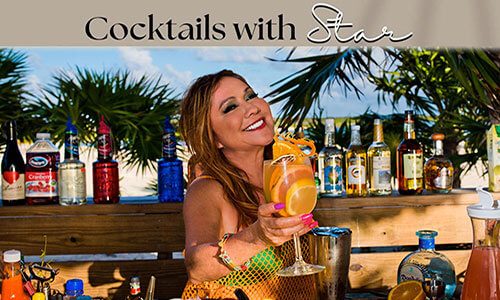Mary Bartnikowski, an award winning pro-photographer for 25 years and author from California has led programs at Stanford, Apple Computer, Intel and worldwide for humanitarian foundations and her own photography workshops. She is a great person and we have become great friends in the very short time that we have met and gotten together. She is currently in Caye Caulker and San Pedro until Dec 24 teaching her 3-hour crash course. Here is an article she contributed to Ambergris Today as a way to share her work with other. Below you can find her contact information if you are interested in learning more about photography.
How to Shoot Like a Pro
A photographer is a painter in a hurry. The viewfinder is your canvas – what will you put in it?

Let your sense of wonder and awe guide you. Drop all the shoulds and coulds, the rules and fools to swim in your own creativity. And get so comfortable with your camera that you feel uncomfortable without it. Let it become a piece of your body; like your arm.
When you shoot, clear your mind of everything but these 4 elements: Light, Composition, Angle, and Timing. When all these are working well you have a great photograph. Sometimes with only three you get a stellar shot. Paint with light, compose your canvas, practice your timing and shoot from the best angle even if you have to lie on the ground.
If you’re not getting dirty you probably aren’t getting good nature shots. And if your composition looks boring change your angle it always works. Get up high or get down low.
Photography is about your vision and perspective not the number of your pixels. No two eyes are like any other pair! Like a child; be more curious than logical. Look deeply at a rose, sunset, or baby before taking any photos unless you are so caught up in the moment you have to.
Approach your photography with fresh eyes. Pretend you have never seen an orchid or a kitten. Try to show us what we haven’t seen before.
But resist buying more tools (cameras/lenses) before you master what you have. You can start out with a cheap throwaway camera and still get great photos.
The camera is just a tool for your vision.
Learn how to use it. Study the manual and figure out how this creative tool operates. When your camera becomes like a 6th sense for you then you can forget about it and exercise your vision while capturing photos. The fun and profound part.
Before you click the shutter check all four sides of your viewfinder and ask yourself: is everything in this composition that I want to include? Maybe you want to take something out or put something in. You may want to move a half an inch or shoot from a lower angle or get up higher and shoot down if you are out in nature or composing a landscape. Experiment. No one has to see the photos you take to teach your self skills. All the practice shots can be deleted and you will be left with the gems.
Portraiture in a Nutshell
A great portrait captures a person’s essence. Yes it does take a bit of a person’s soul, that’s why people don’t want to have their photo taken so you have to be sneaky. Stealth and mischief are important to capturing portraits fast with an attitude of being instant best friends. How?
Connect with the person and decide to love them. Pretend you don’t have a camera so you can talk to them and help them to forget you might take their photograph. When you have made the connection then you take out your camera and ask with your eyes if you can photograph them. Don’t ask with your voice as it is too easy for them to say no.
Practice sharpens your timing aptitude. This photo has all 4 buttons checked; timing, light, composition, and angle. I told this captivating woman in Peru I would buy a water bottle carrier she had made and then I showed her my film camera. Amazingly she got into the picture taking, which many times happens for a half second. She gave me ten seconds. What a gift.
Another approach is like getting friendly with cats. Let them come to you when they are ready; don’t rush up to them and intrude upon their personal space. Quietly let them know you are available but if they would rather not engage that’s fine. You let your subject tell you if it’s okay with their eyes. Let your interaction happen with ease and good will. If they don’t let you capture them that’s okay too. What is important is the interaction. The personal connection comes first; the result is a good photograph.
There are two kinds of portraits: 1. Your subject cooperates with you for a minute or two and 2. Your subject lets you in for 1 second or less – these are travel portraits – indigenous folks of any country will not pose so you have to be FAST.
Ask your subject questions: what was your favorite moment of your recent trip? How did you meet your lover/wife/partner? Anything about their children. Experiment. Wait patiently for people to express themselves while pausing with your finger on the shutter ready to pounce like a panther to get it. My finger is intuitive on its own and sometimes snaps it earlier than my brain says. Trust it.

Mary Bartnikowski is currently in Caye Caulker and San Pedro until Dec 24 teaching her 3-hour crash course:
Capture Stunning Portraits and Travel Photographs.
Call: 636-4876
Contact: www.bartnikowski.com
her new book, Kitten Heels in Kathmandu, Adventures of a Female Vagabond
is on Amazon for Kindle: http://www.amazon.com/Kitten-Kathmandu-Adventures-Vagabond-ebook/dp/B005…
and as a PDF file: http://www.bitmenu.com/widget/offer.html?offerId=2619
Email: mbartnikowski@yahoo.com
“It was an experience to open the door to a whole new world!”
Nana Pirata, Japan
Next time: Little Kid Ecstasy: Learning How to See
And Macro Photography











